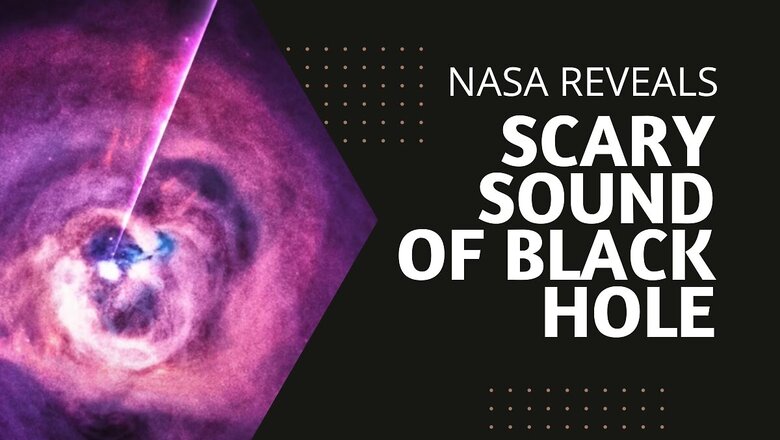
views
NASA recently released an audio file on YouTube claiming it to be the sounds recorded from a black hole. Using a new sonification technology, NASA was able to convert pressure waves and ripples into audio that humans can comprehend.
WATCH VIDEO: Scary Sounds Of A Black Hole Recorded By NASA
According to NADA, since 2003, the black hole at the centre of the Perseus galaxy cluster has been associated with sound. This is because astronomers discovered that pressure waves sent out by the black hole caused ripples in the cluster’s hot gas that could be translated into a note – one that humans cannot hear some 57 octaves below middle C.
“Now a new sonification brings more notes to this black hole sound machine. This new sonification – that is, the translation of astronomical data into sound – is being released for NASA’s Black Hole Week this year," said NASA.
WATCH VIDEO: This Machine From Philips Cleans Your Sneakers
NASA further explained that the new sonification “revisits the actual sound waves discovered in data from NASA’s Chandra X-ray Observatory". The space agency states that is a “popular misconception" that there is no sound in space originates with the fact that most of space is essentially a vacuum, providing no medium for sound waves to propagate through.
“A galaxy cluster, on the other hand, has copious amounts of gas that envelop the hundreds or even thousands of galaxies within it, providing a medium for the sound waves to travel. In this new sonification of Perseus, the sound waves astronomers previously identified were extracted and made audible for the first time. The sound waves were extracted in radial directions, that is, outwards from the centre," explained NASA.
To make it audible for humans, the signals were resynthesised into the range of human hearing by scaling them upward by 57 and 58 octaves above their true pitch.
WATCH VIDEO: You Might Be Accidentally Scratching Your Phone!
“Another way to put this is that they are being heard 144 quadrillion and 288 quadrillion times higher than their original frequency. (A quadrillion is 1,000,000,000,000,000.) The radar-like scan around the image allows you to hear waves emitted in different directions," it added.
Read the Latest News and Breaking News here




















Comments
0 comment